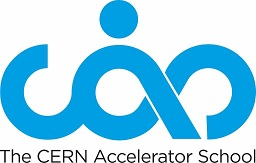The subject of this introductory course is transverse dynamics of charged par-ticle beams in linear approximation. Starting with a discussion of the most im-portant types of magnets and defining their multipole strengths, the linearizedequations of motion of charged particles in static magnetic fields are derivedusing an orthogonal reference frame following the design orbit. ...
The subject of this introductory course is transverse dynamics of charged particle beams in linear approximation. Starting with a discussion of the most important types of magnets and defining their multipole strengths, the linearised equations of motion of charged particles in static magnetic fields are derived using an orthogonal reference frame following the design orbit. Analytical...
The subject of this introductory course is transverse dynamics of charged particle beams in linear approximation. Starting with a discussion of the most important types of magnets and defining their multipole strengths, the linearised equations of motion of charged particles in static magnetic fields are derived using an orthogonal reference frame following the design orbit. ...
After briefly discussing sources of imperfections, we characterize them
in terms of dipole, quadrupolar, and skew quadrupolar errors and move
on to discuss how these imperfections are modeled in beam dynamics codes.
We continue by reviewing the concepts of dispersion and chromaticity and
explain how they are measured before turning to imperfections that are
caused by multipoles, in...
"
We introduce the BPM-corrector response coefficient R12 as the key quantity
to characterise the effect of imperfections on the beam dynamics before
addressing how the effect of multiple imperfections are combined. We then
introduce local beam bumps as a means to adjust the beam position locally
and move on to discuss orbit correction and the orbit response matrix.
We place special...
"After discussing how to account for the periodicity in rings, we first generalise the response coefficient R12, and then the orbit response matrix to such systems.
We move on to use the response matrix to correct the orbit and generalise the concept by introducing dispersion-free steering before turning to gradient errors and stop bands. Measuring and correcting the tune addresses one...
Development and applications of ultrasonic measurement, monitoring, non-destructive testing and diagnostic techniques
Nonlinear dynamical systems - mathematical modelling and applications
